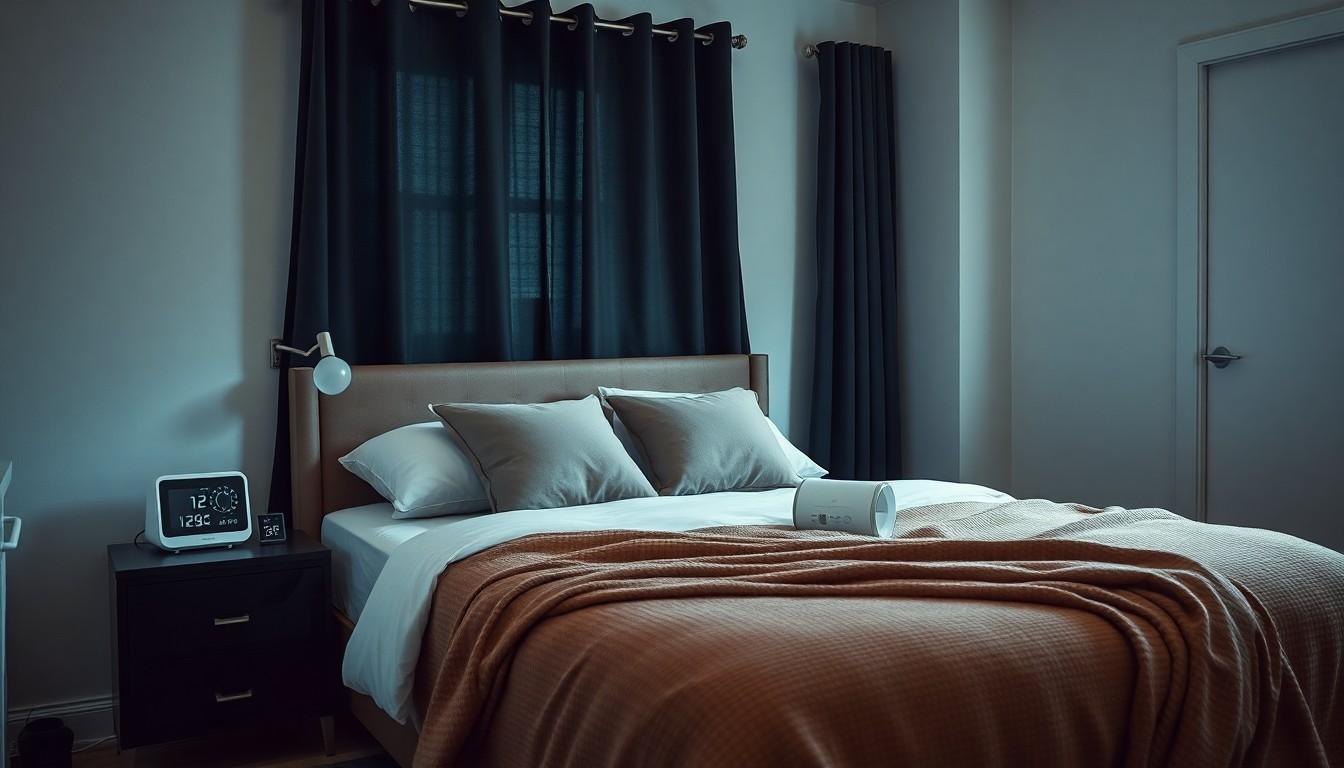Getting a good night’s sleep shouldn’t feel like an impossible dream. Yet for millions of people worldwide insomnia disrupts their daily lives causing exhaustion frustration and decreased productivity. Understanding and following proper insomnia guidelines can make the difference between tossing and turning all night and achieving restful sleep.
Medical experts have developed comprehensive strategies to help those struggling with sleepless nights. These evidence-based guidelines combine lifestyle changes behavioral modifications and when necessary medical interventions. They’re designed to address both acute and chronic insomnia while promoting healthy sleep habits that can last a lifetime.
Understanding Insomnia and Its Impact
Insomnia affects millions of adults worldwide, disrupting sleep patterns through difficulty falling asleep or maintaining sleep despite adequate opportunities. This sleep disorder manifests in distinct forms with varying durations and triggers.
Types of Insomnia
Insomnia classifications fall into several categories based on duration and underlying causes:
- Acute Insomnia
- Lasts less than 3 months
- Triggered by specific life events (job loss, relationship changes, travel)
- Resolves once the stressor diminishes
- Chronic Insomnia
- Persists for 3+ months
- Occurs at least 3 nights per week
- Develops independent of initial triggers
- Comorbid Insomnia
- Appears alongside medical conditions (arthritis, chronic pain)
- Accompanies mental health disorders (anxiety, depression)
- Requires treatment of both conditions
- Onset Insomnia
- Involves difficulty initiating sleep
- Creates extended sleep latency periods
- Results in reduced total sleep time
- Maintenance Insomnia
- Features frequent nighttime awakenings
- Prevents consolidated sleep periods
- Leads to early morning awakening
- Cognitive Effects
- Decreased concentration
- Impaired memory formation
- Reduced decision-making ability
- Physical Health Issues
- Weakened immune system function
- Increased cardiovascular risks
- Altered metabolism patterns
- Mental Health Impacts
- Elevated anxiety levels
- Heightened depression risk
- Mood regulation difficulties
- Daily Function Problems
- Reduced work productivity
- Increased accident risk
- Compromised social interactions
Clinical Assessment and Diagnosis

Clinical assessment forms the cornerstone of insomnia diagnosis through a comprehensive evaluation process. Medical professionals utilize specific diagnostic criteria to identify insomnia patterns and their impact on daily functioning.
Sleep History Evaluation
Sleep history evaluation encompasses multiple components to establish insomnia patterns:
- Duration and timing of sleep difficulties
- Pre-sleep behaviors and routines
- Sleep environment characteristics
- Wake-time patterns and morning routines
- Daytime fatigue levels and performance impacts
- Previous sleep treatment attempts and outcomes
The evaluation process includes documenting:
- Specific insomnia complaints (difficulty falling asleep, maintaining sleep)
- Daily sleep-wake schedule variations
- Weekend vs weekday sleep patterns
- Sleep-related symptoms (snoring, leg movements)
- Daytime performance consequences
Physical Examination Requirements
Physical examination focuses on identifying medical conditions that contribute to insomnia:
- Vital signs measurement
- Respiratory system assessment
- Cardiovascular evaluation
- Neurological screening
- Thyroid gland examination
Key examination components include:
- Blood pressure monitoring
- Heart rate assessment
- Respiratory rate evaluation
- Body mass index calculation
- Upper airway examination
- Underlying medical conditions
- Physical symptoms affecting sleep
- Signs of other sleep disorders
- Health factors impacting sleep quality
Evidence-Based Treatment Options

Medical professionals employ proven therapeutic approaches to address insomnia based on clinical evidence and patient-specific factors. The treatment options range from behavioral interventions to medication-based solutions, with effectiveness rates varying among different patient populations.
Cognitive Behavioral Therapy for Insomnia
CBT-I stands as the primary recommended treatment for chronic insomnia in adults, endorsed by both the American College of Physicians (ACP) and the American Academy of Sleep Medicine (AASM). This structured program incorporates multiple therapeutic components:
- Stimulus Control Therapy: Establishes a strong association between the bedroom environment and sleep
- Sleep Restriction: Creates a consistent sleep schedule that matches time in bed with actual sleep time
- Relaxation Techniques: Reduces physical and mental tension before bedtime
Clinical studies demonstrate CBT-I’s effectiveness in:
| Sleep Parameter | Improvement Areas |
|---|---|
| Sleep Onset | Reduced time to fall asleep |
| Sleep Maintenance | Decreased nighttime awakenings |
| Sleep Quality | Enhanced overall sleep efficiency |
| Treatment Format | Effective in both in-person and digital delivery |
Prescription Sleep Medications
Prescription medications provide short-term relief for acute insomnia cases when used under medical supervision. Common prescription options include:
- Benzodiazepines: Target specific brain receptors to induce sleep
- Non-benzodiazepine Hypnotics: Offer targeted sleep promotion with fewer side effects
- Melatonin Receptor Agonists: Regulate sleep-wake cycles through natural hormone pathways
- Antidepressants: Address both mood disorders and sleep disturbances
| Consideration | Impact |
|---|---|
| Duration of Use | Limited to short-term treatment |
| Side Effects | Morning drowsiness potential |
| Dependency Risk | Monitored for addiction potential |
| Individual Response | Varied effectiveness by patient |
Lifestyle Modifications and Sleep Hygiene

Lifestyle modifications form the foundation of effective insomnia management. Cognitive Behavioral Therapy for Insomnia (CBT-I) stands as the primary recommended treatment approach, incorporating specific behavioral changes and sleep hygiene practices.
Creating an Optimal Sleep Environment
The bedroom environment plays a crucial role in promoting quality sleep. Key environmental factors include:
- Maintaining a dark room using blackout curtains or eye masks
- Setting the temperature between 60-67°F (15.6-19.4°C)
- Minimizing noise through soundproofing or white noise machines
- Using comfortable mattresses pillows
- Removing electronic devices electronics from the bedroom
Daily Habits That Promote Better Sleep
Consistent daily routines enhance natural sleep patterns through specific practices:
- Avoiding caffeine nicotine alcohol within 4-6 hours of bedtime
- Limiting heavy meals to 2-3 hours before sleep
- Reducing screen exposure 1 hour before bedtime
- Establishing a regular sleep schedule with fixed wake times
- Engaging in moderate exercise during morning or early afternoon hours
Sleep Duration Requirements by Age:
| Age Group | Recommended Hours |
|---|---|
| Adults (18-64) | 7-9 hours |
| Older Adults (65+) | 7-8 hours |
These lifestyle modifications work in conjunction with CBT-I techniques to address both acute chronic insomnia symptoms. Regular implementation of these practices creates sustainable sleep improvements through behavioral conditioning environmental optimization.
Special Population Considerations

Insomnia treatment strategies require specific modifications for certain populations to ensure safety and effectiveness. These guidelines address the unique needs of elderly individuals and pregnant women to optimize treatment outcomes while minimizing risks.
Guidelines for Elderly Patients
Cognitive Behavioral Therapy for Insomnia (CBT-I) stands as the primary treatment choice for elderly patients with chronic insomnia. This non-pharmacological approach incorporates multiple components:
-
Behavioral Interventions
- Stimulus control therapy
- Sleep restriction protocols
- Relaxation training exercises
- Cognitive restructuring techniques
-
Medication Considerations
- Prolonged-release melatonin serves as a first-line treatment for adults over 55
- Benzodiazepines demonstrate increased risks in elderly populations
- Sedative-hypnotics require careful monitoring due to:
- Memory impairment risks
- Coordination difficulties
- Excessive daytime drowsiness
Managing Insomnia During Pregnancy
Sleep disturbances commonly occur during pregnancy due to hormonal changes physiological discomfort. Treatment approaches focus on safe interventions:
-
Non-Pharmacological Options
- Sleep positioning adjustments
- Pregnancy-specific relaxation techniques
- Modified CBT-I protocols
- Minimal medication exposure
- Regular sleep schedule maintenance
| Population Group | First-Line Treatment | Safety Considerations |
|---|---|---|
| Elderly (55+) | CBT-I & Melatonin | High risk of falls & cognitive impairment |
| Pregnant Women | Modified CBT-I | Medication restrictions & positioning needs |
Monitoring Treatment Progress
Treatment progress monitoring forms an essential component of insomnia management through systematic evaluation and adjustment of interventions. Regular assessment ensures optimal therapeutic outcomes and early detection of potential complications.
Follow-up Recommendations
- Schedule follow-up appointments every 2-4 weeks during initial treatment phases
- Document medication responses side effects during each visit
- Implement shared decision-making between clinician patient for treatment adjustments
- Review treatment adherence barriers costs at follow-up sessions
- Evaluate the effectiveness of current interventions before considering alternative approaches
- Use validated assessment tools:
- Insomnia Severity Index (ISI) to track symptom changes
- Sleep diaries to record daily sleep patterns duration
- Quality of life questionnaires to assess functional improvement
- Track key metrics:
| Metric | Target Improvement |
|——–|——————-|
| Sleep onset time | ≤30 minutes |
| Wake time after sleep onset | ≤30 minutes |
| Total sleep time | 7-9 hours |
| Sleep efficiency | ≥85% | - Monitor daytime functioning improvements:
- Energy levels
- Cognitive performance
- Mood stability
- Work productivity
- Document treatment-related changes:
- Reduction in sleep medication use
- Implementation of sleep hygiene practices
Conclusion
Living with insomnia doesn’t have to be a permanent struggle. Through proper implementation of evidence-based guidelines including CBT-I lifestyle modifications and medical interventions individuals can regain control of their sleep patterns. Success lies in a personalized approach that combines professional guidance with consistent adherence to recommended practices.
The path to better sleep requires patience commitment and sometimes professional support. With the right combination of treatments and lifestyle adjustments most people can achieve lasting improvements in their sleep quality and overall well-being. Taking that first step toward proper treatment can open the door to nights of restful sleep and more energetic productive days.
